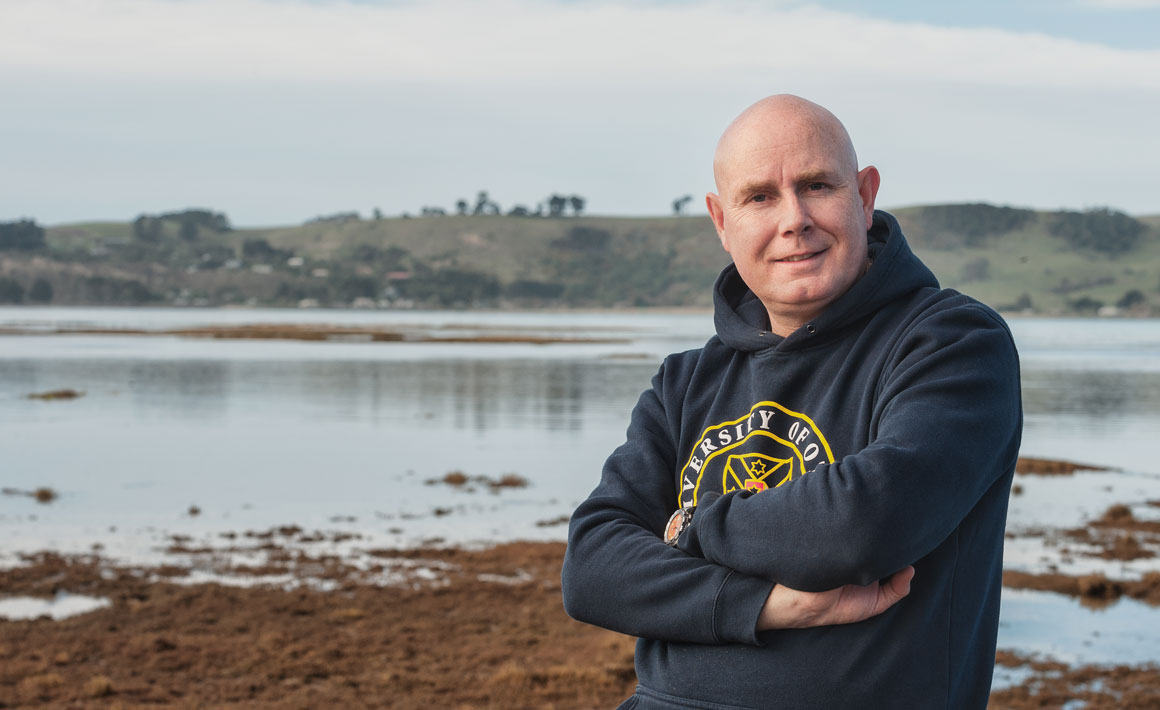 Professor Neil Gemmell: “This can add an extra element, perhaps helping to identify virus circulating in asymptomatic carriers.”
Professor Neil Gemmell: “This can add an extra element, perhaps helping to identify virus circulating in asymptomatic carriers.”Testing sewage for the presence of COVID-19 could be an additional safeguard in the fight against the virus.
Retrospective wastewater testing has shown that COVID-19 was present in Italy around a month before the first cases were reported, while across the globe researchers are showing that wastewater detection of coronavirus can identify hidden clusters and the emergence of the disease days ahead of other approaches.
Among the vanguard of this work is Otago geneticist Professor Neil Gemmell who is part of a national group led by ESR exploring the value of wastewater testing for the coronavirus in New Zealand.
Gemmell says that detecting the presence and, potentially, the abundance of the COVID-19 virus in sewage could become an important tool to monitor its spread and help uncover pockets of infection.
“Depending on what we find we could then make some predictions about which communities might need to go back into – and out of – lockdown. It could be particularly useful for monitoring likely hot spots for new COVID-19 entry and dispersion such as airports, ports and quarantine facilities.
“Essentially, wherever there is the possibility of new cases emerging in New Zealand from people arriving from those parts of the globe where COVID-19 is now widespread we could be testing the sewage as an additional safeguard.”
The wastewater project dovetails with an existing international programme that has been monitoring antibiotic resistance by testing untreated sewage. For the past three years Gemmell and his team from the Department of Anatomy have contributed to this programme by taking samples from Dunedin's Tahuna wastewater treatment plant.
Urban sewage is of interest to researchers because it allows a wide net to be cast, providing sampling material from a large and mostly healthy population, and with few barriers such as the need to obtain informed consent.
Gemmell believes the protocols used in the existing programme can be transferred successfully to test for COVID-19: this is supported by studies both here and internationally that have shown that the virus can be detected in sewage. A pilot study led by ESR is currently determining the sensitivity of the test, and the correlation of viral load in wastewater and community swab tests. If this is promising, he says they can consider using it in a track-and-trace mode where, potentially, samples from one waste treatment plant may be enough to indicate the levels of circulating COVID-19 in a community.
“We need to do a lot of experimentation to see if it works and then hopefully – in months not days – we would have a system which would enable us to detect the virus quickly, accurately and at scale.”
With COVID-19 cases re-emerging, the ability to test sewage at facility, local and regional scales could well be an important part of New Zealand's surveillance safety net, he says.
“Depending on what we find we could then make some predictions about which communities might need to go back into – and out of – lockdown. It could be particularly useful for monitoring likely hot spots for new COVID-19 entry and dispersion such as airports, ports and quarantine facilities.”
“This can add an extra element, perhaps helping to identify virus circulating in asymptomatic carriers. As cases get lower this is likely where virus may persist and we might determine that, 'Nobody's reported sick in this community, but there's still COVID circulating so we have to go in and have a look'.”
“Ultimately, we would hope see the elimination of the virus from our population, but until then this sort of monitoring is important for safeguarding ourselves from community-wide outbreaks.”
Funding
Ministry of Business, Innovation and Employment